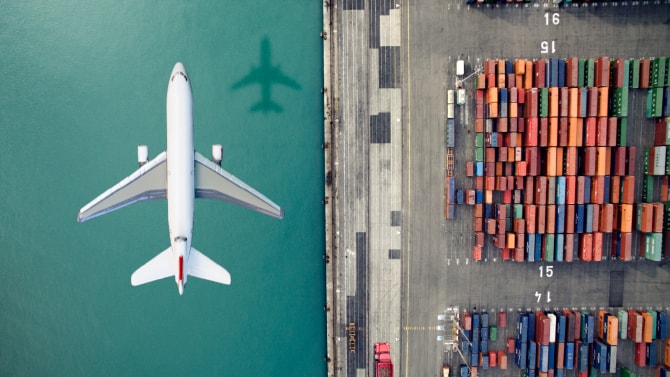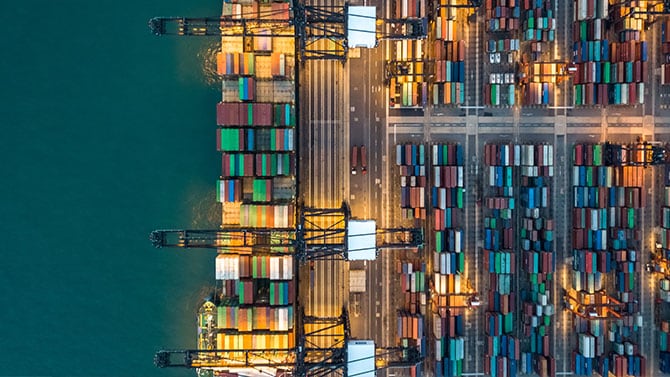{{item.title}}
{{item.text}}

{{item.text}}
The adopted Revision of the EU emissions trading system (ETS) increases the scope and range of the EU ETS by reducing the overall quantity of allowances (cap) and by expanding the scope to new sectors. The maritime transport sector would be fully included in the existing EU ETS and a new separate Emissions Trading Scheme would be introduced for the buildings and road transport sectors. Also for aviation free EU ETS emission allowances will be phased out, based on another adopted Amending Directive.
The envisaged extension of the ETS to maritime transport would build on existing monitoring, reporting and verification (MRV) mechanisms. The new EU ETS for road transport and buildings would apply upstream, building on existing provisions regulating tax warehouses or fuel suppliers.
These changes may have significant financial impact on the sectors (to be) included in the EU ETS. By design, therefore, the incentives for investing in carbon efficient alternatives may be shifted. Assessing this impact and contemplating structural shifts are important steps in preparation for the potential implementation of the rules. The starting point of such exercise can be an inventorisation of the carbon footprint of your current business operations, of (technical) possibilities available to reduce the footprint and the effects of and consequences for your supply and value chain. A next step can be to simulate application of the new taxes and levies to your ‘as is’ situation as well as to calculate the abatement costs to come to a new situation taking into account incentives and subsidies available.
From 1 January 2027, the new taxable subjects in the sectors road transport and buildings (‘regulated entities’, distributors of energy products) have to surrender a number of emission allowances to be acquired that is equal to the total emissions, corresponding to the quantity of fuels released for consumption (road transport and buildings) the preceding calendar year. This regards a EU wide mechanism, for two domestic sectors in each of the separate EU Member States.
Shipping companies within the scope of the new EU ETS shall be liable to surrender allowances according to the following schedule: (a) 40 per cent of verified emissions reported for 2024; (b) 70 per cent of verified emissions reported for 2025; (c) 100 per cent of verified emissions reported for 2026 and each year thereafter.
With respect to the obligations under the new ETS, the Dutch administering maritime authority will be relevant for shipping companies registered in the Netherlands, and for non-EU shipping companies where the Netherlands would be the EU-country with the greatest estimated number of port calls from voyages performed by that shipping company in a certain period.
The specialists at PwC can help you assess the implications for your organisation.
Europe has raised its climate ambitions and set a target of 55 per cent net emissions reductions by 2030. The proposed changes in the EU ETS, increasing its sectoral scope and accelerating the cap reduction, are meant to reflect this ambitious goal.
Free allowances will be gradually phased out for certain sectors, aligning with the introduction of the CBAM. During a nine-year period between 2026 and 2034, the free allowances will be phased-out at a slower rate at the beginning and an accelerated rate at the end.
So as of 2034 - with a few exceptions - the free allowances will be completely abolished. Before the end of the assessment period, the Commission shall assess the risk of carbon leakage for goods produced in the EU intended for export to non-EU countries and, if needed, present a WTO-compliant legislative proposal to address this risk.
The creation of a separate self-standing emissions trading scheme for buildings and road transport would represent a significant expansion of the sectoral scope of the EU carbon pricing system (EU ETS). The relevant 'regulated entities' will have to obtain greenhouse gas emission permits in 2027 and already will have to report their emissions for 2025 and 2026. The obligation to surrender allowances (and other compliance obligations) will only apply from 2027 onwards. Crucially, allowances would be auctioned without any free allocation. With adoption of these obligations, the possibility is built in to extend the date of effective entry into force by one year to 2028, if energy prices are exceptionally high.
Considering the large number of emitters, the taxable subject designated for surrendering the required allowances is selected upstream the supply chain. The ‘regulated entity’, therefore, is not the actual emitter but the entity responsible for the release for consumption of fuels which are used for combustion in the sectors of buildings and road transport. There are exceptions provided such as the release for consumption of fuels for which the emission factor is zero. The regulated entities are defined in line with the EU system of excise duty.
From 1 January 2027, EU Member States shall ensure that, by 30 April each year, the regulated entity surrenders a number of allowances that is equal to the total emissions, corresponding to the quantity of fuels released for consumption pursuant during the preceding calendar year and that those allowances are subsequently cancelled.
For the sector road transport, the proposed revision of the regulation setting CO2 standards for new cars and vans accompanies this proposal, as zero emission cars, or strongly decarbonised road vehicles will not or less be inflicted by the new EU ETS for the road transport sector.
Under the proposal, the maritime transport sector would be gradually included in the current EU ETS through a transitional period starting as soon as 2024, achieving full inclusion in 2027. Shipping companies would start with an obligation to surrender allowances for only a part of their verified emissions, gradually increasing to an obligation to surrender allowances for 100 per cent of their verified emissions in 3 years.
In terms of scope, the extension of the EU ETS to maritime transport would apply to half of the emissions from extra-EU voyages, to the emissions of intra-EU transport and to the emissions generated during docking at an EU port. In terms of vessel size, large vessels above 5,000 gross tonnage will be included in the scope of EU ETS maritime from the start. Before 2027, the Commission will examine the feasibility of including (offshore) vessels between 5,000 and 400 gross tonnage in EU ETS. It is agreed to include non-CO2 emissions (methane and nitrous oxide) in EU ETS from 2026 onwards. In addition, the agreement strengthens measures to combat the risk of evasion.
In addition to expanding the scope to new sectors, the proposal also increments the reduction targets of the existing system.
The linear reduction factor is increased to 4.3 per cent for 2024 to 2027, and 4.4 per cent for 2028 to 2030.
The overall quantity of allowances ('cap') will therefore decline at an increased annual pace resulting in an overall emission reduction of sectors under the EU ETS of 62 per cent by 2030 compared to 2005.
In addition, from 2024 the cap is increased by an amount of allowances corresponding to the maritime transport emissions to be included in the EU ETS.
Analysis of the MSR and the expected developments relevant to the carbon market demonstrate that a rate of 12 per cent of the total number of allowances in circulation to be placed in the reserve each year after 2023 is insufficient to prevent a significant increase of the surplus of allowances in the EU ETS. Therefore, after 2023, the percentage figure continues to be 24 per cent, and the minimum number of allowances to be placed in the reserve also continues to be 200 million.
With an update of the EU ETS benchmarks the emission reductions in sectors and sub-sectors are followed more closely, by increasing the maximum update rate to 2,5 per cent per year as of 2026 instead of the current 1,6 per cent.
In the case of installations covered by the obligation to conduct an energy audit under the EED, free allocation shall only be granted fully if the recommendations of the audit report are implemented, to the extent that the pay-back time for the relevant investments does not exceed five years and that the costs of those investments are proportionate. Otherwise, the amount of free allocation shall be reduced by 25 per cent. The amount of free allocation shall not be reduced if an operator demonstrates that it has implemented other measures which lead to greenhouse gas emission reductions equivalent to those recommended by the audit report.
No free allocation shall be given to installations in sectors or sub sectors to the extent they are covered by other measures to address the risk of carbon leakage as established by the CBAM Regulation.
Sectors outside the EU ETS are covered by the Effort Sharing Regulation (ESR), which establishes an overall EU-wide greenhouse gas emission reductions target, as well as binding annual targets for individual Member States to be achieved by 2030. The ESR covers among others the road transport and buildings sectors, as well as emissions from domestic navigation.
By providing the additional economic incentives (through carbon pricing) necessary to achieving the cost efficient emission reductions in buildings and road transport, the new ETS would complement the ESR in the current scope, which maintains incentives and accountability for national action.
For emissions of greenhouse gas that end up permanently chemically bound in a product so that they do not enter the atmosphere under normal use.
Free emission allowances for aviation will be gradually phased out starting in 2026. Also, the current exception from the EU ETS scope of EU ETS for flights from within the EU to third countries could be abolished in case of a negative evaluation of CORSIA’s progress by 1 July 2026. Treatment of aviation emissions is more aligned with the global Carbon Offsetting and Reduction Scheme for International Aviation (CORSIA).
This proposal introduces amendments to the EU Emissions Trading System (EU ETS) legislation in relation to its application to aviation to ensure that:
The legal basis for this proposal is Article 192 TFEU.
The proposal is amending Directive 2003/87/EC and Decision (EU) 2015/1814 to strengthen the EU Emissions Trading System and the MSR Regulation (EU) 2015/757. The proposal was adopted by the European Parliament on 18 April 2023 and the Council of the EU on 25 April 2023 and published in the Official Journal of the EU on 16 May 2023. The amended directive will enter into effect on 1 October 2023.
{{item.text}}

{{item.text}}

Energy - Utilities - Resources Industry, Tax, Partner, PwC Netherlands
Tel: +31 (0)65 154 18 97

Partner, Energy transition and sustainable energy, PwC Netherlands
Tel: +31 (0)65 160 08 61

Juliette Marsé
Director (Tax) - Energy, Utilities & Resources, PwC Netherlands
Tel: +31 (0)63 419 61 08

Mohammed Azouagh
Senior Manager - Tax, Sustainability and Incentives, PwC Netherlands
Tel: +31 (0)62 380 36 54





